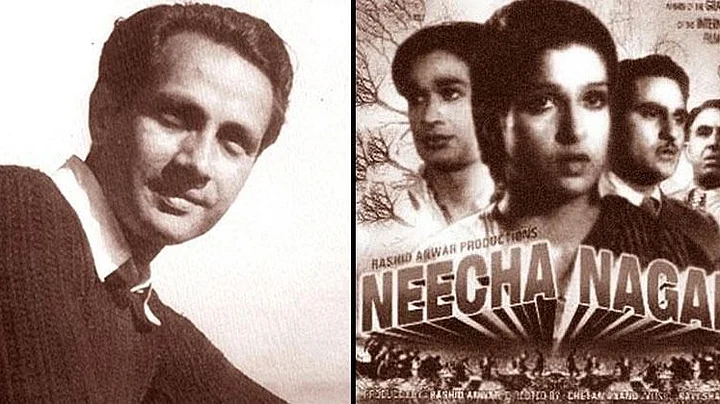For cinephiles like me, not having a single Indian film at the Cannes Film Festival this year is a major disappointment. The festival is an amazing cocktail of fashion, glitter and the movies, and to know that this year is going to be largely about the former is saddening.
But there was a time, the only time actually when an Indian film won the prestigious Palme d’Or which is the highest honour at Cannes and that too at the very first edition of the festival. The film was Chetan Anand’s Neecha Nagar made way back in 1946.
You can watch the full film here:
Anand was extremely inspired by Soviet cinema and directors like Pudovkin and Eisenstein and the German expressionist movement in film as well. The film represented the classic divide between the bourgeoisie and the proletariats.
A rich capitalistic mayor called Sarkar wants to divert a stream of sewage across the land of the neighbouring village so that they are forced to leave the place. He could then avail of that land and built massive apartments block there.
Neecha Nagar was shot at a time when the Britishers were still ruling India, and so it was very difficult for the team to shoot the film, and also get the film stock required for it. The tough times that people went through in India at that time, are reflected in the film. Sarkar tries his best to evict the poor villagers from their area- from bribing them to threatening them and eventually does manage to divert the dirty stream into the village.
I have to admit that the film is painfully slow but it was made 73 years ago so you can cut it some slack.
What Anand does get right are the female characters, played by Kamini Kaushal (this was her debut) and Uma Anand.
Uma plays Sarkar’s daughter Maya who begins to realise that she doesn’t want to side with her father and falls in love with Balraj. Kaushal plays Rupa a nurse who treats the villagers when the dirty stream infects them. She too gets infected and eventually dies, and this acts as a catalyst for Maya’s rebellion against her father. She becomes definitive and joins the struggle of the villagers.
The plight of the villagers in India has largely remained the same, with industrialisation becoming more and more rapid. There’s a scene in the film where a child is extremely thirsty and needs water but has no option but to drink the stale water. Anand managed to catch my attention through moments like that.
An accusation about films sent from India to festivals abroad is that they accentuate the stereotype of India being a poor nation, and there’s the whole ‘poverty porn’ debate. But Neecha Nagar is very representative of the repressed state that India was in and the complete helplessness that ordinary citizens felt. Some portions felt so real, that I was almost amazed at how far we’ve come in areas of healthcare and cleanliness.
The acting too particularly be Kamini Kaushal and Uma Anand is subtle and eschews exaggeration. On the other hand Rafi Peer’s performance as Sarkar is so exaggerated that it’s comical, so I don’t really despise him. Again I do acknowledge the fact that it was made long ago, but considering the film has several poignant moments this was a little jarring.
The end too is conveniently positive, with Sarkar being removed as the mayor, and the villagers being triumphant. But in the condition that we were in at that time, it was important for people to be motivated and not lose hope.
For a film that was celebrated at Cannes, Neecha Nagar actually never got a commercial release. Years later some prints were found rotting and the film was handed over to the Film Archive of India.
It’s been decades but people are still fighting for right over their land, the rich are becoming richer and the poor poorer and that’s the law of the jungle. But watch Neecha Nagar to perhaps remind you of your privilege like it did for me, or for the sake of vintage cinema. But remember to have truckloads of patience, and don’t watch it on a gloomy day.
(At The Quint, we question everything. Play an active role in shaping our journalism by becoming a member today.)
